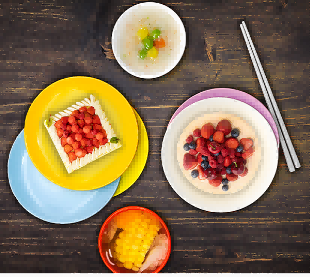Environmentally friendly tableware has the following impact on reducing plastic pollution
2024-06-05
Reduce plastic waste: Traditional single-use plastic cutlery is often thrown away after use and eventually becomes waste. These plastic products are difficult to degrade and will remain in the environment for a long time and may enter waters, soil and the food chain of wildlife. Using eco-friendly tableware can reduce the production of plastic waste, thereby reducing the pressure of plastic pollution.

Reduce plastic waste in landfills and incineration: A large amount of plastic tableware is discarded and ends up in landfills or incineration. Landfills take up a lot of land resources, and plastics gradually release harmful substances. The incineration process releases toxic gases and large amounts of carbon dioxide. Using eco-friendly tableware reduces the need for landfill and incineration, thereby reducing associated environmental pollution and carbon emissions.
Promote the use of degradable materials: Environmentally friendly tableware is usually made of degradable or recyclable materials. Degradable materials can decompose naturally under certain conditions, reducing their lasting impact on the environment. The use of environmentally friendly tableware can promote the use of degradable materials and promote the development of related technologies and industries.
Increase public awareness of environmental protection: Using environmentally friendly tableware can draw public attention to plastic pollution and environmental protection. It can serve as a demonstration to inspire individuals and businesses to take more environmentally friendly actions, such as reducing plastic use, choosing degradable materials and promoting sustainable development practices.
In summary, using environmentally friendly tableware can significantly reduce plastic pollution, protect the environment, and promote sustainable development. This is an important step to combat the global problem of plastic pollution and build a more sustainable future. The use of environmentally friendly tableware may have a certain impact on the quality and use experience of the tableware, but this depends on the specific type of environmentally friendly tableware and manufacturing process.
Material properties: Eco-friendly tableware is often made from degradable or recyclable materials, which may have different physical properties than traditional plastic or metal tableware. For example, some degradable materials may be relatively fragile and unable to withstand excessive temperatures or heavy pressure. Therefore, when choosing environmentally friendly tableware, you need to pay attention to the characteristics of the material to ensure that it is suitable for the required usage scenario.
Lifespan: Disposable plastic cutlery usually has a shorter lifespan, while eco-friendly cutlery tends to be more durable. Reusable, eco-friendly cutlery, such as stainless steel cutlery or silicone cutlery, can be used multiple times but may require cleaning and maintenance. This may have an impact on the user experience as they require more maintenance and upkeep.
Appearance and Design: The look and design of eco-friendly dinnerware may be slightly different than traditional dinnerware. Some eco-friendly tableware are made from natural materials and may have a pristine texture and appearance. This may have an impact on users' aesthetic preferences for tableware.



